 | > Other English exercises on the same topics: Speaking | Find the word [Change theme] |
| > Similar tests: - Vocabulary: greeting people - Vocabulary: on the phone - On the phone - Interacting with someone - Dialogue : What time...? - Conditional clauses - Differences between Like and As - Eating out-Vocabulary | |
| > Double-click on words you don't understand |
Vocabulary: what about a little game of tennis...
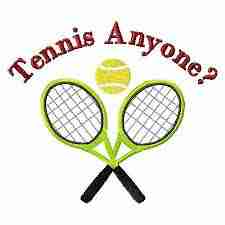
What about a game of tennis ? It's the right time for it... The important tournaments have started and are arriving in our latitudes...
Tennis , a typically British activity in its initial solemnity (and its complexity) appeared in Birmingham, in England, at the end of the 19th century: it was lawn tennis ( lawn being another British speciality!... )
The rules of the game are very precise; they may vary very slightly in the different countries where tennis is played also depending of the surface where the games are played. The weather has here a very important role!
These rules have changed very little with time, except for two "details":
· - from 1908 to 1961, the server had to keep, at least, one foot on the ground.
· - In the 1970s a "tiebreaker" was introduced: (after a draw - at 6 games to six- a12 point tiebreaker is used) ( minimum 7 points and 2 points difference)
The chair umpire announces the scores (adding 15 at a time, first: 15 (15-0 = 15-love), 15-15, 15-30. Then 30- 40=> game OR 30-30= deuce, then "advantage X or Y" till one of the players wins the game.
The origin of this way of scoring would come from the French 'jeu de paume"! Others prefer the image of the clock and its quarters...(15-love , "deuce" = 2 points away from the game.) these are only suppositions, but funny ones!
A set is won when one of the opponents reaches 6 games with at least 2 games difference. The outcome of the match is determined after being three sets in a "best of five" for male players in a Grand Slam tournament, Davis Cup and the Olympic games, and the best of 3 for all other tournaments.
Female players play the best of 3 sets in all cases.
In order to play correctly, you'd better get a racket or raquet, tennis balls, a net, and, of course a court. For singles (2 players), never use the Doubles sidelines, which are only played for Doubles (4 players).
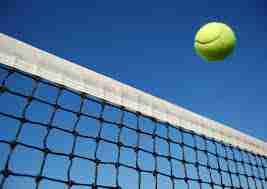
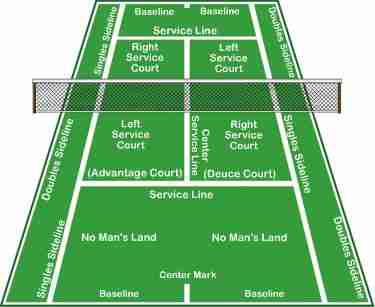
1) The necessary equipment (or gear) and the main actors:
| 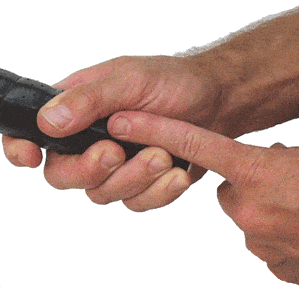 | 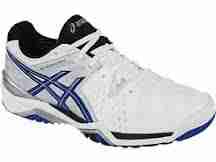 |
A (tennis) racket /raquet | The grip (of the handle) | A tennis shoe |
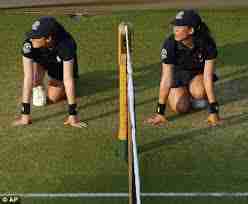 | 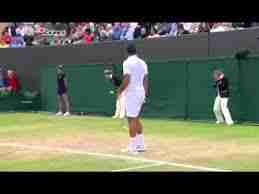 | 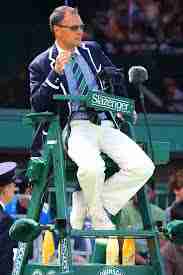 |
| Ball boys/girls | The Line judges | The umpire on his chair |
The tournament has a referee, coordinating the different umpires.
2) The different surfaces you can play on:
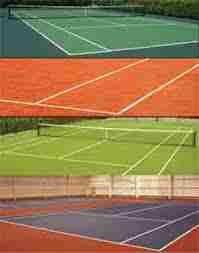
a) "Real tennis"... lawn tennis: (Grass courts)
The grass Court is normally associated with the prestigious Wimbledon Championships, which take place in July. This surface is the fastest one and is quite slippery. The ball has a lower and unpredictable bounce as the soil is softer and not regular at all, thus favouring players with a good serve and net players such as Roger Federer, Pete Sampras and John McEnroe.
b) The Hard courts are made of concrete or synthetic material:
They are commonly available courts and are easy to maintain. On those surfaces, the ball travels at a speed slower than on Grass Courts, but faster than Clay Courts. The bounce of the ball is high and predictable. They're referred to as the Democratic courts and favour all styles of play, from the "Serve and volley Player" to a Baseliner.
c) Clay longs: the deep red coloured Clay Courts are synonymous with the French Open Championships. It's the slowest surface, as the clay slows down the speed of the ball, reduces its skid and causes a high bounce. A ball played by "hard hitters" makes it easier for the opponent to return the shot. Clay courts are favoured by baseline players who spin their balls : Michael Chang et Rafael Nadal.
3) "The Big Tournaments"=> the Grand Slam:
The Grand Slam Tournaments are composed of the Australian Open (mid-January), the Paris Open (in May and June), of Wimbledon, (in June and July) and of the US Open in August and September. Each tournament lasts two weeks. In Australia and in the United States, they're played on hard surfaces. The French tournament on clay, and Wimbledon on « grass ».
When did they start?
Wimbledon : 1877, then The US Open : 1881, The French Open in 1891 and the Australian one in 1905. Before1924/25, Wimbledon only was an important tournament, the moment when the Grand Slam was created.
4) Introducing some shots:
| a serve= the starting stroke | "fault" =a missed serve |
| an ace = a winning serve | "double fault" = Two faulty serves |
a dropshot = a light way of hitting the ball | "serve and volley" = serve and volley |
| a passing shot passes by the player | a back spin = a sliced ball |
| the warm-up= the final training | a left-hander plays with his left hand |
| the mark = (left by a ball) | a bounce /to bounce |
4) Some world-known stars thrill us thanks to the extraordinary performances they achieve during matches.
All the champions below have been photographed in action by YA and JM (2 excellent classified and passionate players). Great thanks to them.
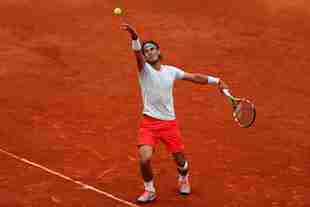 | 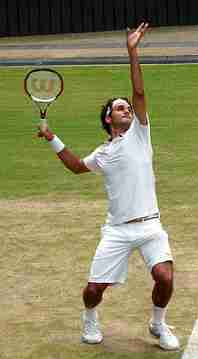 |
| A lefthander's serve | A righthander's serve |
| RAFAEL NADAL | ROGER FEDERER |
 | 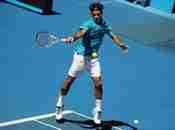 |
| Lefthanded forehand | Righthanded forehand |
| RAFAEL NADAL | Roger FEDERER |
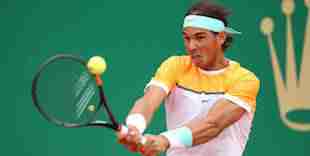 | 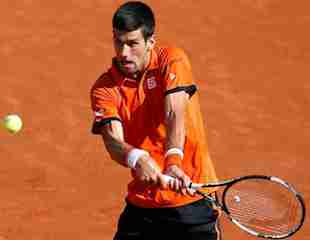 |
A lefthander's backhand RAFAEL NADAL | A righthander backhand(2 hands) NOVAK DJOKOVIC ("Nole") |
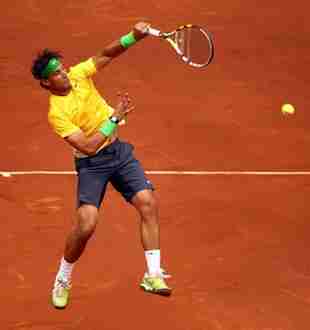 | 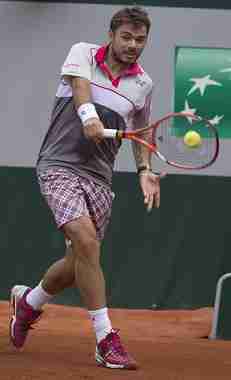 |
| A smash RAFAEL NADAL | Backhand (with an only hand!) STAN WAWRINSKA |
 | 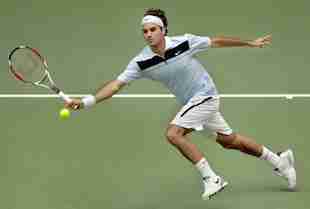 |
Lefhanded forehand volley RAFAEL NADAL | Righthanded forehand volley ROGER FEDERER |
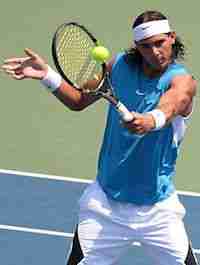 | 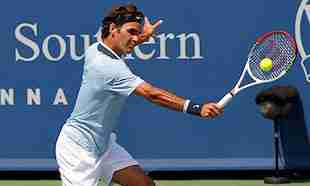 |
Another lefthanded forehand volley RAFAEL NADAL | Righthanded backhand volley ROGER FEDERER |
Roger FEDERER has won the greatest number of Grand Slam tournaments= 17.
Rafael NADAL ("the King of Clay): has won 46 tournaments, 14 Grand Slam ones (9 of which are Roland-Garros)
Novak DJOKOVIC ("nole") has won 9 Grand Slam tournaments.
Stan WAWRINKA has won 2 Grand Slam tournaments.
Andy MURRAY has won 2 Grand Slam tournaments too.
Roland-Garros started this Saturday May 21st 2016 and it was said that 66,000 balls are used during the tournament! In your opinion, which of the two will win it ?
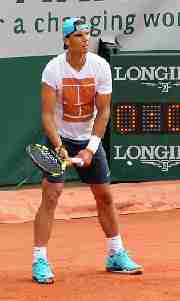 OR
OR 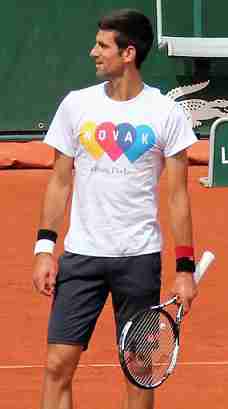
English exercise "Vocabulary: what about a little game of tennis..." created by here4u with The test builder. [More lessons & exercises from here4u]
Click here to see the current stats of this English test
End of the free exercise to learn English: Vocabulary: what about a little game of tennis...
A free English exercise to learn English.
Other English exercises on the same topics : Speaking | Find the word | All our lessons and exercises



